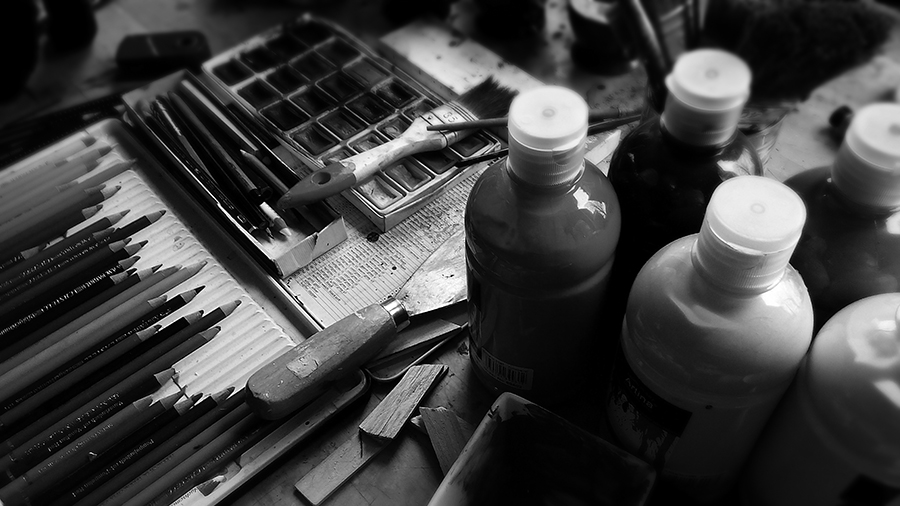Business and art go together like… Well, these days, the proverbial horse and carriage
ndy Warhol, a man who knew whereof he spoke, once observed, “Making money is art and working is art and good business is the best art.”
The pop artist was not the first to appreciate the possibilities of combining art and money. In 1886, Sir John Everett Millais painted A Child’s World, a vanitas portrait of his grandson blowing bubbles. Thomas Barrett, managing director of A & F Pears, realised its image of innocence (and healthy skin) could be used to sell soap. Millais was reluctant to sanction its reproduction as an advertisement, but eventually he consented and generations of parents saw his adverts and children found Pears soap in the bathroom.
There was one difference between Andy Warhol and John Millais. Warhol embraced commerce, the bigger the better, it was the point of his work, whereas the knight-painter was more concerned about artistic integrity. Criticised for selling out, Millais tried to prevent the painting being used for advertising, but having sold it was unable to do so.
“More than ever, artists are rolling over for the corporate world which, in turn, is embracing them”
Art and business are diametrically opposed. The one is creative, individual, internalised; the other systematised, mass market, external. Yet more than ever, artists are rolling over for the corporate world which, in turn, is embracing them.
The battalions of commerce have realised times are changing. It is no longer enough to satisfy consumers’ needs functionally – brands require an emotional connection. Contemporary art, with its connotations of sex and glamour, and intellectual playfulness, its visual culture,
is the perfect vehicle.
Hence companies are incorporating art into their brands. No longer content with hanging an Old Master in the boardroom, Diageo corralled Sean ‘Diddy’ Combs as a brand ambassador for Cîroc Vodka; Louis Vuitton handbags have been designed by Jeff Koons and the Chapman Brothers; Absolut Vodka created special edition, artist-designed bottles; Facebook has an artist-in-residence; We Work incorporated street-art murals in its buildings and Calvin Klein’s New York and Paris flagship stores were redesigned by Sterling Ruby.
The rationale for the collusion is compelling. The internet and social media have revolutionised the visual landscape, and merged art and commerce to an extent Warhol could only dream about. In the age of TikTok and Instagram, consumers have become content creators (of varying abilities), visually sophisticated, quicker to spot inauthenticity. Ads need to be sharper, jokes funnier, colours brighter – a mirror held to the culture.
Art lends itself to advertising because it is interpretative rather than didactic. A consumer projects his or her meaning onto the work. This strengthens brand equity because it feels more personal.
In the process, art has become synonymous with money. In contemporary work, tangible value is a fugitive concept. The days of craftsmen are over. Brand is all. This is fertile ground for advertisers. They understand the contemporary artist, the Faustian pact. In one sense, nothing has changed: for centuries artists were patronised by king, church and wealthy families, tied to the market by, in the words of the critic Clement Greenberg, “an umbilical cord of gold”.
But whose brand is more important, the artist’s or product’s? When creative minds shape emotional responses, often controversially (controversy being the contemporary artist’s currency), there is ample scope for dispute. There is no guarantee the artist’s ‘take’ will accord with corporate expectation. Yet if there is conflict, the artist cannot back down. His or her brand is sacrosanct. It holds the key to their future.
“Executives can swan around private views at which they would otherwise be ignored”
When it works, the benefit to the corporation is clear. Its brand becomes culturally vibrant. It can portray itself as being about something more than simply making money. Executives can swan around private views at which they would otherwise be ignored.
There are trickle-down advantages to employees and shareholders. Companies that invest in artists typically invest in the arts. This leads to museum and gallery passes or exhibition sponsorship. Such a workforce sees itself as more than a wage-slave, but engaged in its community, culturally aware. This should help employees to unleash their own creativity and make a company attractive to potential candidates.
For the artist, the attractions are also obvious. At a time of diminishing funding, many need alternative means of support. Working for a corporation should offer sufficient funds to undertake pieces that might not be possible otherwise. Gigantism – big, shiny, Instagrammable art – requires investment. Again, the cash generated can be used to create other works that might have remained unfunded. In a money-obsessed art culture, certainly one led by Damien Hirst, no one is going to be accused, per John Millais, of selling out.
The accusation has ceased to matter. Every artist, however radical, knows high prices are only paid by the wealthy, many of whose artistic appreciation plays second fiddle to their interest in capital appreciation. Besides, if artists openly promote a consumer brand, there is a transparency to the transaction not always visible in other forms of patronage – or art.
An artist, of course, will also talk about the chance to ‘influence’ a company positively. Cao Fei, who has worked with BMW, Siemens and Hermès, maintains:
“…the interesting point is how the brand and the artist are fighting”. Well, up to a point.
While the artist holds the creative cards, he or she is still the vulnerable player in the equation. Tales of contracts reneged upon and commissions pulled are rife, albeit invariably balanced by claims the creative departed from the script (though surely that was the point of hiring one?).
Ultimately, it is the consumer who benefits. Elizabeth C Hirschman, professor of marketing at the Business School, Rutgers University, observes: “If consumers are only presented with what they want and readily accept, then the potential for social change and intellectual diversity is curtailed.” This may be true, but how many corporations are truly interested in social change and intellectual diversity? Nevertheless, it is encouraging to find that somewhere consumption is heralded as a catalyst for such potential. The handbag, it seems, might yet prove mightier than the sword.








